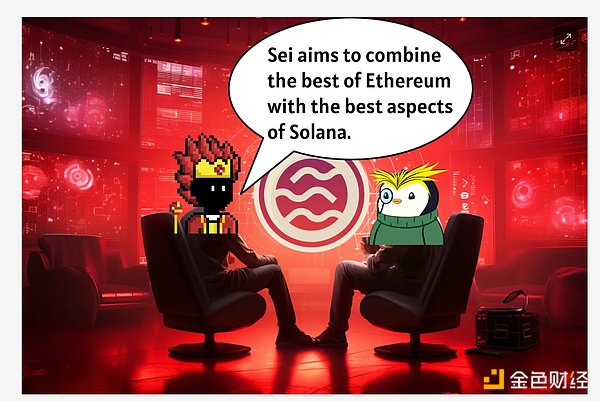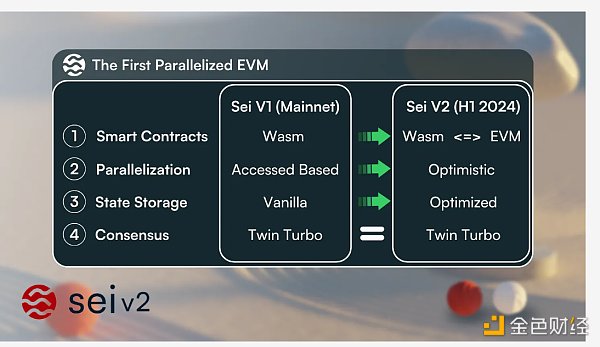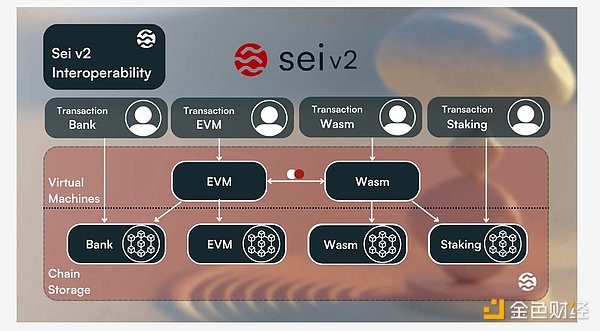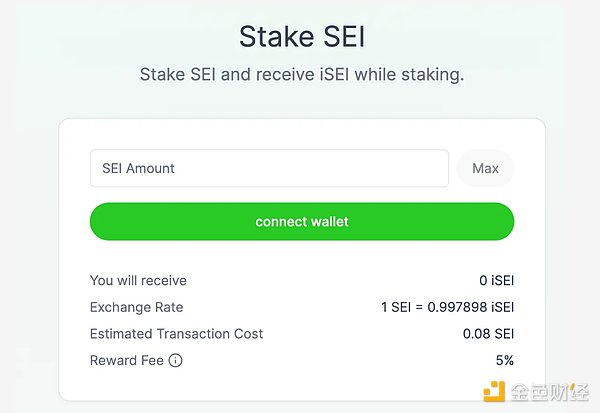Author: Ignas, DeFi researcher Source: X, @DefiIgnas Translation: Shan Oppa, Golden Finance
The Sei project has attracted much attention recently, but what is so special about it? Among the many emerging L1 and L2 programs, why does the SEI L1 program stand out?
In order to better understand the SEI team’s views on the L1 field, the differences between monolithic and modular blockchain development, and the ultimate vision of the SEI project, I decided to ask some questions directly to the SEI team.

p>
Other issues discussed:
Has Ethereum already won the L1 race?
What is special about SEI V2 and parallel EVM?
What other exciting developments are coming next for Sei and the SEI ecosystem?

Question 1:
In an era when multiple L1s and more and more Layer 2s are emerging, does L1 (especially Sei) still have any meaning to exist? Do you agree with Sanketh (Polygon) and Matter Labs CEO that Ethereum has won the L1 battle?
Jeff's answer:
Me and Jay founded Sei Labs in 2021 when we were trying to build a DEX and evaluated every infrastructure option: Ethereum, Avalanche, Arbitrum, Solana, even Terra!
We quickly realized that no matter which Layer 1 or Layer 2 you built it on, you couldn't build a user experience that was truly comparable to Coinbase and Binance. Competitive decentralized exchange.
Solving user experience problems is Sei's core goal. If Sei is successful, applications will be able to provide nearly the same user experience as any Web2 competitor, which will be very powerful.
Being the first project to parallelize EVM is a crucial step in Sei's journey to solve user experience problems. Sei brings some of the major advancements introduced by Solana to the thriving Ethereum ecosystem.
This journey also includes some other major technical advantages, such as optimistic parallelization and dual boost consensus mechanism created by the Sei Labs team.
To answer your question directly, Sei is the first project to explore parallelizing the EVM and it will become a potential scaling method for the broader Ethereum ecosystem. .
We hope that the Ethereum community will one day leverage Sei's open source code base to enable new possibilities for scaling.
It’s easy to think of this industry as a zero-sum game. However, in the larger context that the cryptocurrency industry is still in its very early stages, we take a positive aggregate view. Ethereum, Sei, and Layer 2 can help the industry scale in the future.
Question 2:
You recently announced Sei V2, the first Parallelized EVM blockchain. But what is so special about the V2 version, and what is a “parallel blockchain”, I believe few people really understand. Why would dapp developers choose to build on Sei instead of other L1s and Ethereum L2?
Jeff's answer:
V2 The update is the largest to the current Sei blockchain to date. Sei introduces four major improvements:
Backward compatibility with EVM - Sei uses Geth under the hood to get full EVM bytecode compatibility. In short, builders on Sei can benefit from the vast universe of Ethereum tools such as MetaMask, Foundry, Remix, and Hardhat.

Optimistic parallelization - currently, most like Solana Parallel chains make parallelization optional, which requires developers to do extra work to use parallelization, which most developers won't do. Sei will automatically parallelize smart contracts so developers don’t have to put in any effort to do so.

SeiDB - Sei will split state submission and state storage, To reduce block processing time, reduce state bloat, and make running new full nodes faster.
Sei V2 will allow EVM contracts to interact with existing Cosmwasm smart contracts and vice versa. This allows the best builders on Cosmos to collaborate with the best builders on Ethereum.

Why does the application choose Sei?
The fastest Layer 1 in history: Average 390 milliseconds determination time Making Sei several times faster than both Layer 1 and Layer 2 with the highest performance.
Experience the chain for yourself! We are getting closer to the near-instantaneous user experience we are accustomed to in Web2 applications.
Sei v2 Leverage familiar tools such as MetaMask to bring the benefits of Sei to EVM developers around the world.
Sei v2's EVM smart contract backward compatibility allows developers to deploy from EVM compatible blocks without changing code The audited smart contract of the chain.
Sei Community is one of the most unique in the industry. A tight-knit group of community members is forming on Sei who enjoy trying new applications and learning about Sei's new possibilities. I suggest you check it out for yourself and get a feel for the atmosphere and memes.
Question 3: Modular and overall design
Modular and monolithic designs are two different blockchain expansion methods. Ethereum has led the way in modular scaling, launching many Layer 2 solutions, and data availability layer chains are constantly being added. Solana and Fantom, on the other hand, opted for a one-piece design.
Sei focuses on monolithic extensions. Please explain why you made this choice? Also, what are your thoughts on these two approaches?
Jeff's answer:
Sei focuses on monolithic design. The performance ceiling of a monolithic system is inherently higher. Essentially, while modular designs offer flexibility and are ideal for experimentation and iteration, they often introduce additional complexity when applied at scale.
Looking forward, especially five years from now, I firmly believe that the most performant infrastructure will still be monolithic. This does not diminish the value of a modular approach, especially when it comes to innovation and specific use cases. But for raw performance and simplified operation, monolithic designs will lead the way.
This is not a completely new development. Monolithic design has been the gold standard for Web2 performance and user experience for decades. Modularity is certainly helpful in the early stages of trying out an application, but ultimately in order to serve billions of users and provide the best user experience, a monolithic design makes the most sense.
Question 4:
What’s next for Sei and the SEI ecosystem? Are you excited about the development? Can you share any upcoming dApps?
Jeff's answer:
Looking ahead In the future, we are preparing for the testnet of Sei v2, which is planned to be launched in the next month or so. The mainnet transition is planned for the first half of 2024 and will undergo a rigorous governance and audit process to ensure maximum security and efficiency.
I encourage everyone to explore the Sei ecosystem, which is currently in its active phase. Currently active centers such as Astroport, Silo Stake, Pallet, Webump, Colony and Seiyans are particularly recommended and are leading the way.

p>
Question 5:
What is the ultimate goal and vision of Sei?
Jeff's answer:
Sei The code of V2 has been completed and can be run on the devnet, and outstanding teams can try it out!
Performance testing showed impressive results, with over 5,000 TPS in a 300ms determined time, and a theoretical TPS of around 12,500. Taking into account batch orders, this means we can process approximately 28,000 operations per second.
Sei aims to combine the best features of Ethereum with the best aspects of Solana.
Combining the incredible tools and developers around Ethereum with the performance and speed improvements of Solana. This will provide the best environment for applications to thrive and serve the next billion users.
 JinseFinance
JinseFinance











